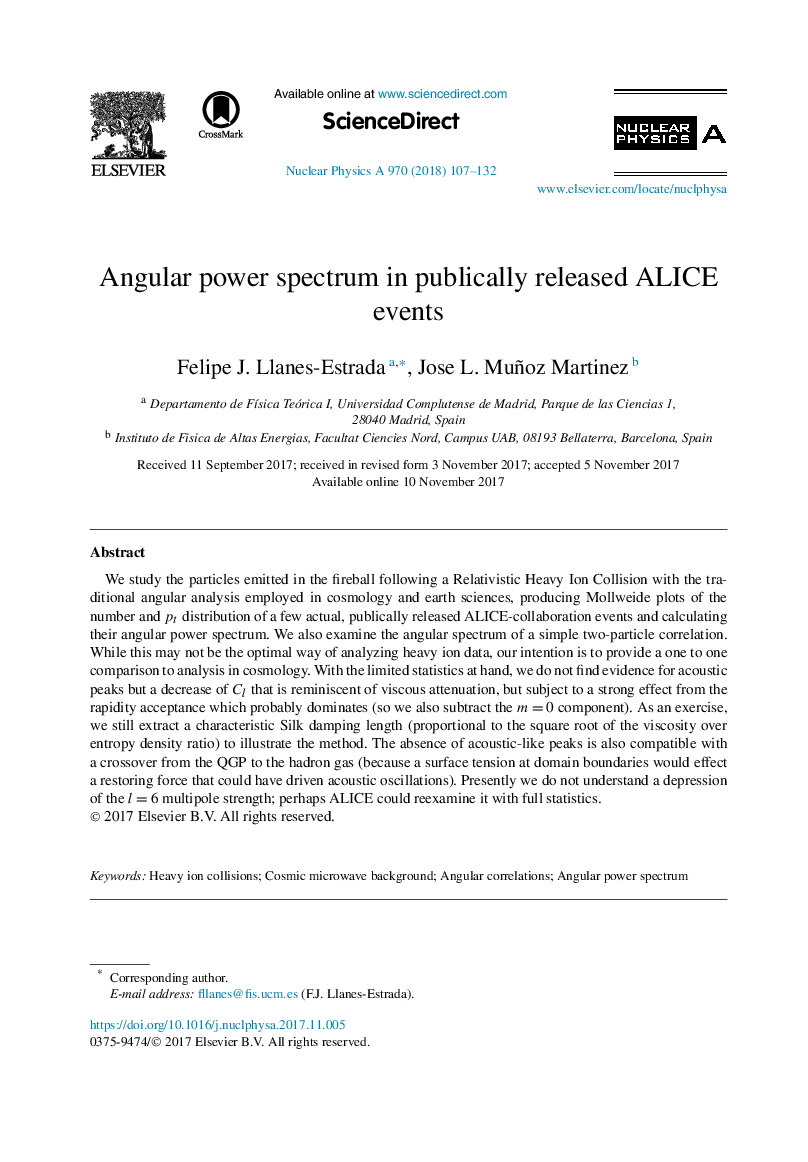| Article ID | Journal | Published Year | Pages | File Type |
|---|---|---|---|---|
| 8182823 | Nuclear Physics A | 2018 | 26 Pages |
Abstract
We study the particles emitted in the fireball following a Relativistic Heavy Ion Collision with the traditional angular analysis employed in cosmology and earth sciences, producing Mollweide plots of the number and pt distribution of a few actual, publically released ALICE-collaboration events and calculating their angular power spectrum. We also examine the angular spectrum of a simple two-particle correlation. While this may not be the optimal way of analyzing heavy ion data, our intention is to provide a one to one comparison to analysis in cosmology. With the limited statistics at hand, we do not find evidence for acoustic peaks but a decrease of Cl that is reminiscent of viscous attenuation, but subject to a strong effect from the rapidity acceptance which probably dominates (so we also subtract the m=0 component). As an exercise, we still extract a characteristic Silk damping length (proportional to the square root of the viscosity over entropy density ratio) to illustrate the method. The absence of acoustic-like peaks is also compatible with a crossover from the QGP to the hadron gas (because a surface tension at domain boundaries would effect a restoring force that could have driven acoustic oscillations). Presently we do not understand a depression of the l=6 multipole strength; perhaps ALICE could reexamine it with full statistics.
Related Topics
Physical Sciences and Engineering
Physics and Astronomy
Nuclear and High Energy Physics
Authors
Felipe J. Llanes-Estrada, Jose L. Muñoz Martinez,
